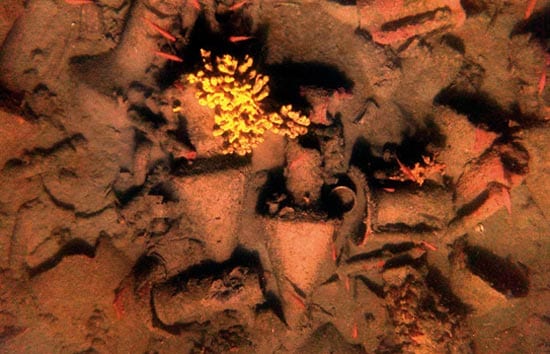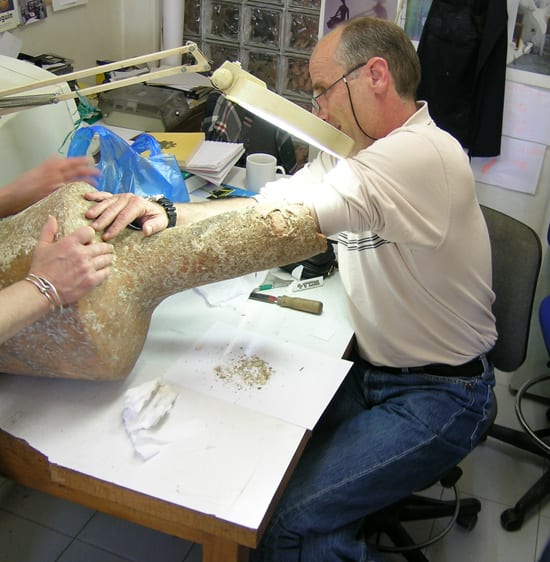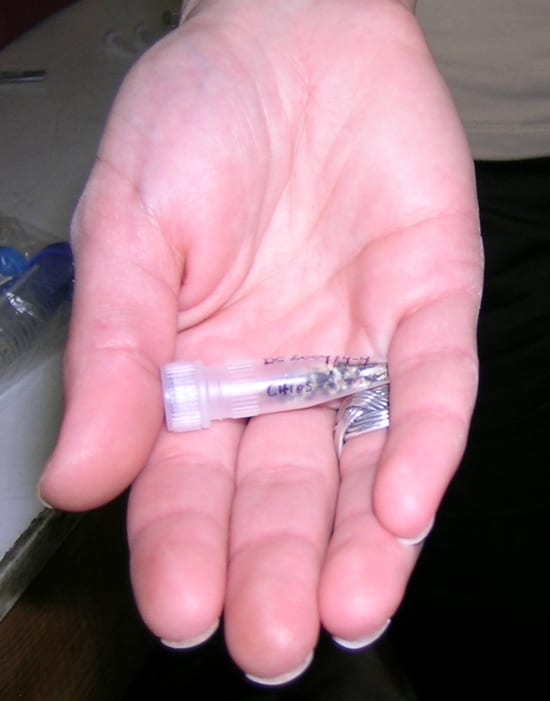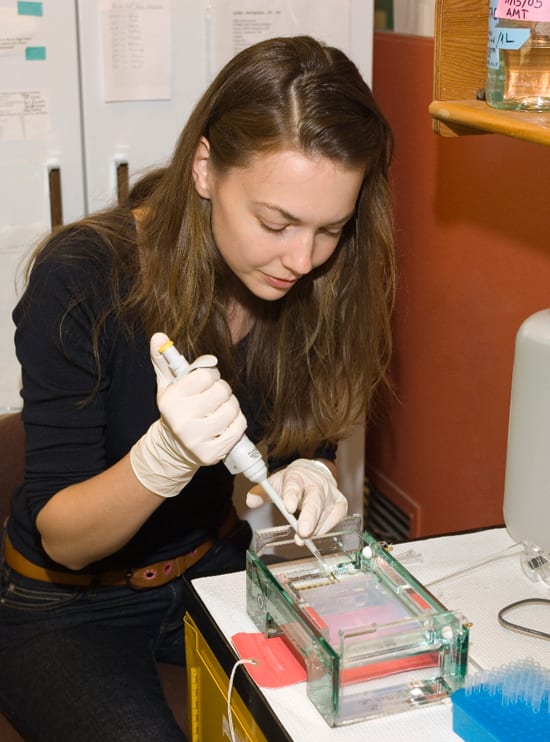
DNA in Shipwrecked Jars Reveals Clues to Ancient World
New tool offers a way to find out what past civilizations were shipping and trading
Scraping inside clay jars recovered from a 2,400-year-old shipwreck, two researchers found DNA fragments that revealed the jars’ long-disappeared probable cargo: oregano, olive oil, and wine.
The genetic technique, developed by Maria Hansson and Brendan Foley, offers a new window into ancient civilizations. Two-handled earthenware jars, called amphorae, were commonly used to store and transport goods in the ancient world, especially by sea. But sunken amphorae usually come up empty, leaving archaeologists with little to go on.
“Imagine if you were asked to analyze the American economy just by looking at the empty shells of 40-foot (12-meter) shipping containers,” said Foley, a deep-sea archaeologist with joint appointments at Woods Hole Oceanographic Institution and the Massachusetts Institute of Technology.
Foley was co-leader of a 2005 expedition with the Hellenic Ministry of Culture and the Hellenic Centre for Marine Research to survey a shipwreck off the Greek island of Chios in the Aegean Sea. Hansson, a molecular biologist from Lund University (and a former postdoctoral scholar at WHOI), suggested trying DNA sampling techniques to detect residues of the jars’ original contents.
They found that one amphora held an olive product (probably olive oil), flavored or perhaps preserved with oregano. The other most likely contained wine, because it appeared to contain fragments of DNA from mastic, a plant that grows on Chios and was used to resinate and preserve wine. (The team isn’t absolutely sure, however, because the same DNA sequences are also found in pistachio nuts.)
The new research, reported October 2007 in the Journal of Archaeological Science, could give scientists the ability to “see who traded what with whom; what people were eating; how they prepared and preserved food; what crops were grown where and when,” Foley said. The latter information could even yield insights into climate change in the ancient world.
Foley and Hansson are now proposing to examine as many as 40 amphorae to determine whether the technique also could be used on ampho-rae in museums.
Funding for this research came from Susan and Robert Bishop, Jane and James Orr, additional private sponsors, the Royal Physiographic Society in Lund (Sweden), and the WHOI Mary Sears Visitor Program.
Slideshow

Slideshow
 Amphorae on the seafloor from an ancient shipwreck retained clues to the cargo they once carried. (Photo courtesy of Woods Hole Oceanographic Institution and Hellenic Ministry of Culture)
Amphorae on the seafloor from an ancient shipwreck retained clues to the cargo they once carried. (Photo courtesy of Woods Hole Oceanographic Institution and Hellenic Ministry of Culture)- Hellenic Ministry of Culture maritime archaeologist Dimitris Kourkoumelis collects a ceramic sample from the interior of a 4th-century-BC amphora from the Greek island of Chios. (Photo by Brendan Foley, Woods Hole Oceanographic Institution)
- Only a small amount of material from ancient amphorae is needed to extract DNA. (Photo by Brendan Foley, Woods Hole Oceanographic Institution)
- Molecular biologist Maria Hansson runs a gel to detect ancient DNA in samples collected from a Greek amphora. (Photo by Brendan Foley, Woods Hole Oceanographic Institution)
Related Articles
- Five marine animals that call shipwrecks home
- Can environmental DNA help us find lost US service members?
- Re-envisioning Underwater Imaging
- Ancient Skeleton Discovered
- Inside the Sunken USS Arizona
- Why Did the El Faro Sink?
- A Luxury-Laden Shipwreck from 65 B.C.
- Farewell to the Knorr
- The Exosuit Comes Aboard
Featured Researchers
See Also
- Ancient DNA fragments inside Classical Greek amphoras reveal cargo of 2400-year-old shipwreck from the Journal of Archaeological Science



